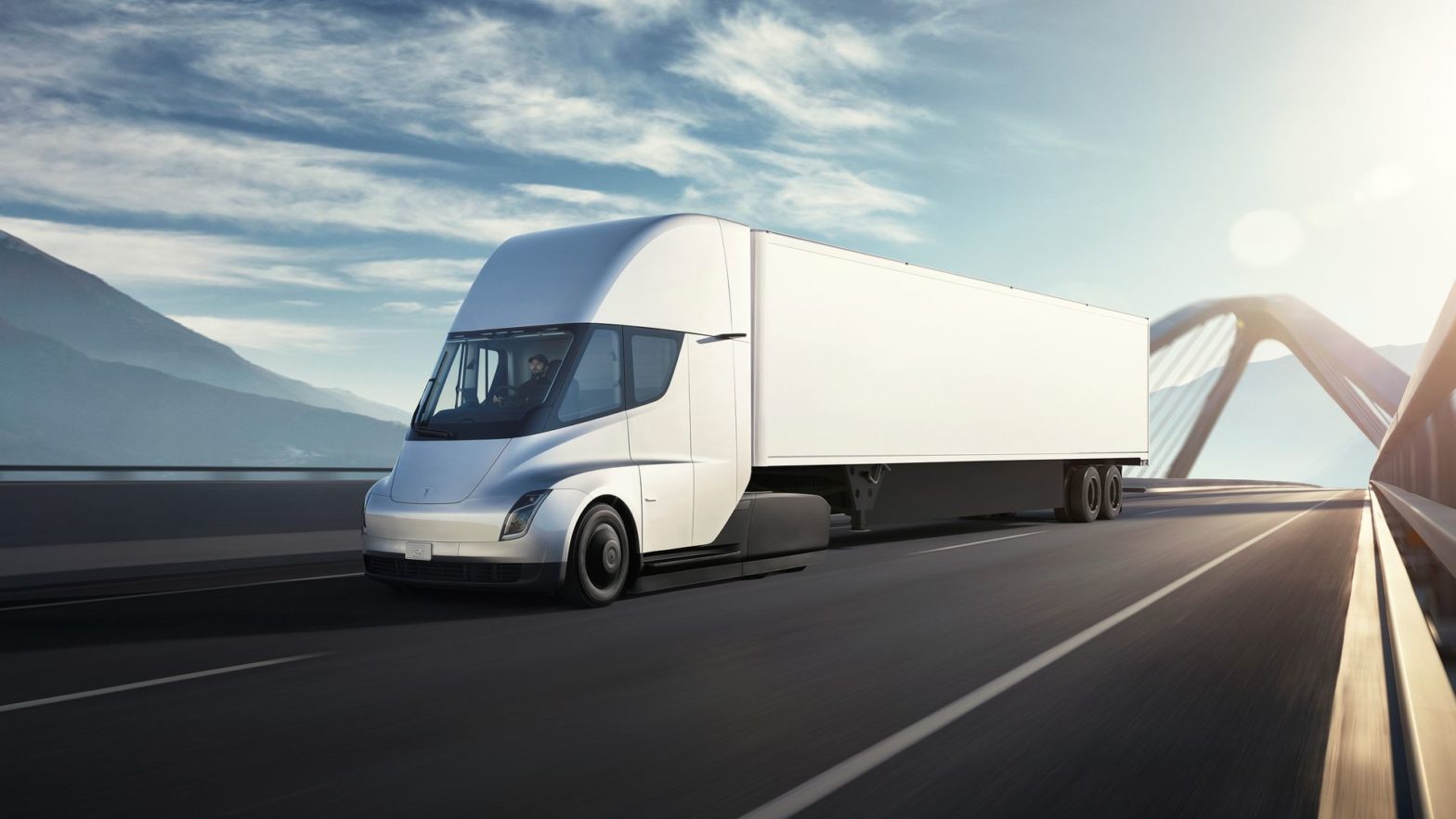Among the exciting Tesla events slated for 2020 is the first deliveries of the Tesla Semi.
The company has said it plans to put “limited volumes” of the all-electric semi into production in 2020. It’s going to be fun to see them hauling down the road.
Many companies with giant fleets of heavy-duty trucks are waiting on delivery of the Tesla Semi. Walmart, UPS, PepsiCo, FedEx, and Anheuser-Busch are among the early customers.
The Tesla Semi was unveiled in November 2017 and by mid-January 2018 approximately 450 Semis had been pre-ordered. In the Q1 2018 Tesla earnings call, Chief Executive Musk said that there were about 2,000 total pre-orders of the Semi. Still, we don’t know exactly how many reservations the Semi has racked up. At a minimum price of $150,000, that backlog of orders adds up to a nice chunk of change for Tesla.
Sedans Before Semis
Obviously, Tesla needs to build the truck first. And, key to building more Semis is battery production. Batteries are one of the biggest factors keeping the Tesla Semi from filling truck stop EV chargers.
“That’s part of the reason why we have not, for example, really accelerated production of the Semi,” Musk said last month during the company’s earnings call. “[It] means making fewer Model 3 or Model Y cars. It uses a lot of cells.”
Tesla, catering to the long-haul customers it’s trying to attract, is putting significant effort into the Semi’s battery power. The size of the batteries in the Semi prototypes spotted testing have not been released, but Tesla watchers think it might have as much as 1 megawatt-hour of energy.
The Semi is expected to have a range of 300-500 miles per charge, which is impressive for a vehicle that can pull 80,000 pounds.
“The thing we are really going to be focused on is increasing production capacity. That is fundamental, and very difficult,” Musk said.

In addition to the battery range, battery charging will be very important to freight companies with little time to wait for a fill-up. During the Semi’s debut in November 2017, Musk said the company would be installing a global network of “Megachargers” that would be solar-powered and would be able to recharge a truck’s batteries in 30 minutes to a capacity to travel 400 miles.
Musk said the company will host a “battery day” in April to offer more details on how Tesla plans to ramp up its battery efforts to keep pace with its growing product line.
Anticipating Delivery
Freightwaves, a publication covering the global freight industry, put together a roundup of pre-order customers’ expectations for delivery. PepsiCo, which pre-ordered 100 Tesla Semis, expects about 15 trucks to be delivered this year, a spokesperson told FreightWaves.
Molly Kunst, a spokesperson for Anheuser-Busch, told the publication the company had ordered 40 Tesla semi-trucks but declined to offer details on delivery dates.
JK Moving founder and Chief Executive Chuck Kuhn said in January that he expects delivery of six Tesla Semi trucks in Q2 2020, followed by a second round of trucks later. Kuhn reportedly visited Tesla’s factory in 2017 to see the Semi in person and walked away impressed with the “tremendous technology.”
International Market
The Tesla Semi has attracted interest from around the world. In addition to well-known American companies like Wal-Mart, UPS, and Pepsi, the Semi has also attracted significant orders. International customers for the Semi include, Asko, a Norwegian food distribution company; Posten Norge, the Norwegian postal service; Loblaw, a Canadian supermarket chain; Fercam, an Italian trucking company; Girteka Logistics, a European transportation company; and Fortigo Freight Services, a Canadian logistics company.
Tesla is also investing in lobbying European countries regarding their laws around semi trucks. For example, some ordinances ban semi trucks on Sundays during morning hours and public holidays to reduce noise and air pollution. Of course, the Tesla Semi is absent of the rumble and diesel fumes put off by traditional semi trucks. Business Insider Germany reported that Tesla asked the German government for an exemption from the semi law. The hope is that there can be a distinction between electric semis and those with internal-combustion engines.
When Will Semi Get Truckin’?
It seems Tesla has been using the same test mules since unveiling the truck. The prototypes have been spotted cruising highways around the U.S. and conducting winter testing in Canada. As we get closer to the anticipated delivery date, you would expect to start seeing more trucks roll out of Tesla’s factory and hit the roads for testing.

However, we still don’t know where the Semi will be built. A chart included in Tesla’s Q3 2019 hints that the truck will be built in the U.S., but does not name a specific location.

With its vehicle offering expanding to seven vehicles soon, you would think Tesla would be running out of room. Or, that perhaps they don’t plan on building thousands of Semis right away. We should hear more of the company’s production plans in coming months.
Tesla Semi is a gutsy product. It requires exceptional engineering and trust from a segment that has been blowing diesel smoke for a hundred years. It will be fun to see the impact the Semi will make on the freight industry.
